Timber Frame Gazebo: Best Choice for Cost, Comfort & Quality
Pros and Cons of Common Material Choices Offered in Gazebo Construction
Gazebos are not new to American landscaping. Traditionally a gazebo was a freestanding eight-sided outdoor structure, with a pitched roof and in colonial time was referred to as a garden or summerhouse. President George Washington had a small eight-sided summerhouse structure at Mount Vernon. President Thomas Jefferson designed three summerhouses and built his own garden, summerhouse (gazebo). Back then a summerhouse or gazebo were only differentiated by its intended use; whether it was for enhancing or enjoying a garden or a place constructed on a particular spot to take in a surrounding view.
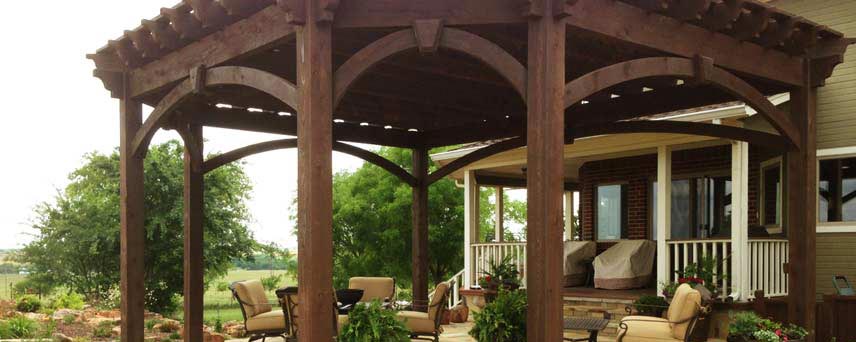
A gazebo can make a big impact on a yard, not only adding elegant and charm as a decorative outdoor piece, it also has adds the functionality of an open air room and an extension of a living area. The type of material used in the construction of a well designed gazebo will determine its for economic value, longstanding strength and for healthy bodily comfort.

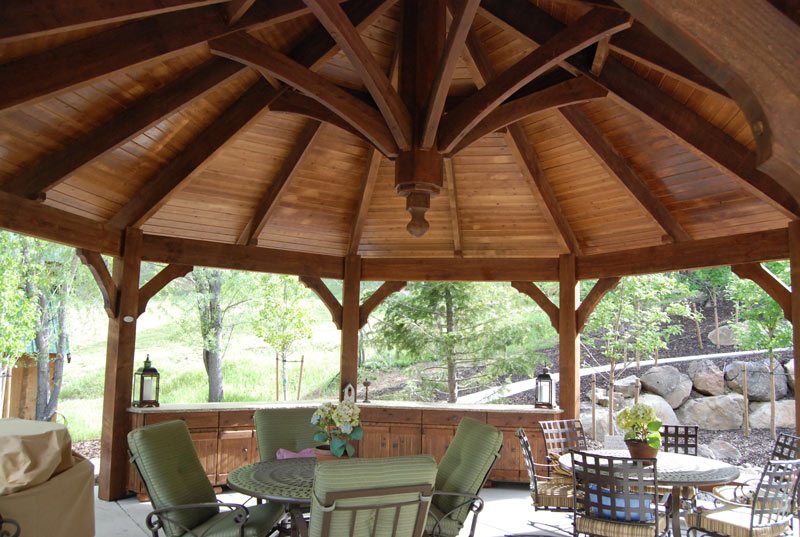
Gazebos are constructed out of many different types of materials such as vinyl, steel, wood, bamboo, aluminum, timber frame and even fabric. Outdoor structures must face a tough life in the elements, exposed to sun, rain, harsh winds and more. Besides thinking about the right kinds of fasteners and finishes it is crucial for a good long term outcome to choose the proper material for durability. A quick look at some pros and cons of some of the material choices offered in gazebo construction will show why timber frame from quality wood is the best architecturally responsible choice of material for cost, quality and comfort in a gazebo.

Common Material Choices Offered in Gazebo Construction
Cedar Gazebo: Cedar is commonly used in the manufacturing of gazebos. Incense Cedar has superior dimensional stability which makes it a good choice for durability in a gazebo. Western Timber Frame offers Incense Cedar as a gazebo material choice which is known for its characteristics of being decay resistance and its ability to handle moisture and high humidity. If you are looking for a more vibrant gold or reddish natural wood color, Incense Cedar is more economical than Redwood, which is also by nature, bug and decay resistant. Incense Cedar can be left unfinished and do well in the elements where its gold tone will change to a beautiful natural silvery gray color over time.
Redwood Gazebo: Redwood used to be a frequent choice for outdoor structures at one time. Its reddish brown color attracted many people. Redwood, like Cedar is durable and naturally resists decay and bugs. Redwood has become hard to find except through specialty dealers. Now, Redwood is most often at a price too far out of reach, for most, for a large outdoor structure. It is still a great choice for small projects. Redwood like Cedar can be left unfinished or finished to preserve its color.
Pine Gazebo: Not all woods can hold up well in the outdoors. Pine is used by some as an alternative to Redwood and Cedar but pine is soft and not very durable. Pine does better in more protected areas. Pressure treated Pine is implemented in decks and fencing but when this soft wood is fully exposed to the elements it only lasts for a few years.
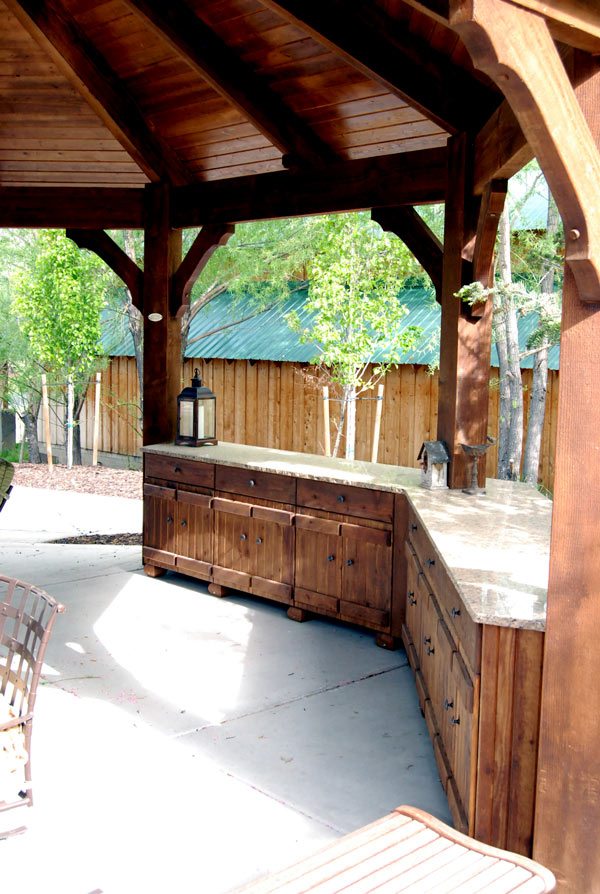
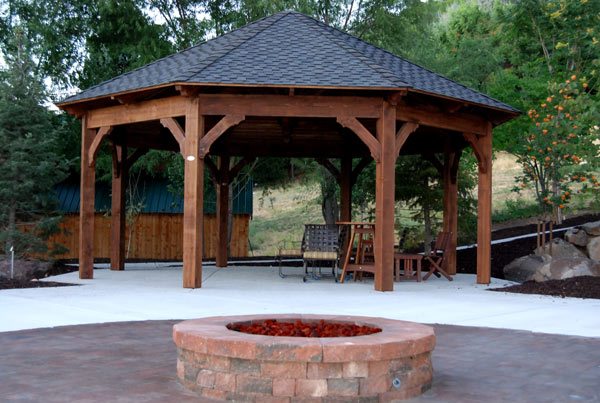
Douglas Fir Gazebo: Douglas Fir is well regarded by structural engineers for its beam strength and remaining straight and true with a high resistance to corrosion. The Douglass Fir has an even higher strength ratio than the California Radiata pine and is considered to be the most per during for timber support beams. Douglas Fir is amazing for its ability to hold screws and fasteners securely, glues well and accepts stains and finishes. Where structural performance is crucial Douglas Fir is used extensively in railway ties, bridges and heavy construction, Douglas Fir can be relied on to remain strong and stable. Pressure-treated/well-seasoned Douglas fir timber is also bug resistant and many myths about wood rot and bugs are still erroneously conveyed as facts. Click here for information on: Debunking Misconceptions About Wood Destroying Organisms. Also, Douglas Fir is widely available, sustainable and environmentally friendly; and a favored wood asked for in Western Timber Frame gazebos, arbors, pergolas, pavilions, trellises and decks.
Brick or Stone Gazebo: Bricks and Stones have been used for centuries in building and fine architectural designs. Brick does well in preventing heat loss and protecting from implement weather. Although brick and stone is cold to the touch it has an amazing ability to retain heat. Cooking with stone, brick or clay dates back thousands of years and is still used around the world to heat, cook, bake and dry foods. Stone is undeniably one of the best surfaces to bake bread on. Flat breads are easily cooked on flat stones by a hot fire because a hot stone quickly heats it up by direct conduction, transferring the heat from the fire to the bread. For bodily comfort and cost, a timber frame gazebo is easier, faster to assemble than brick or stone, naturally regulating more humanly comfortable temperatures. Timber frame also does better in seismic events where the mortar is liable to crack and crumble. Still, if time and cost is not a factor and you desire the look of brick or stone, combining them with timber frame can be an aesthetically pleasing alternative, while still providing the comforts of timber frame.
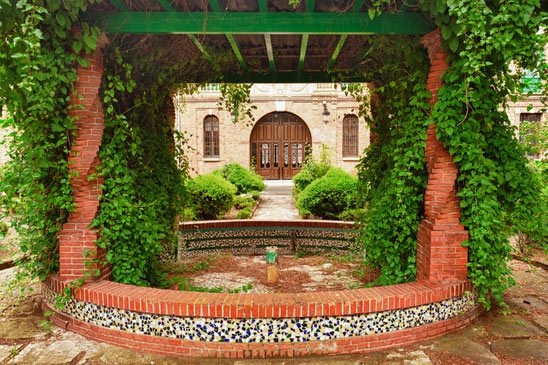
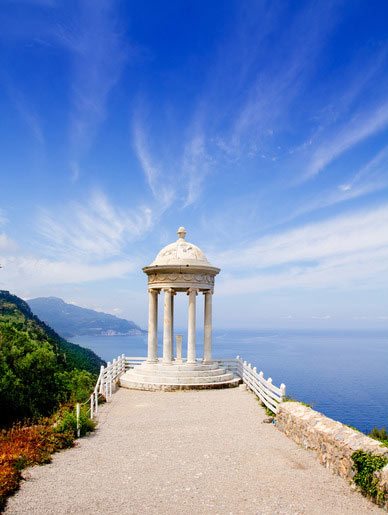
Natural Stone or Marble Gazebo: Natural Stone or Marble gazebos are expensively beautiful permanent structures that are often seen as a complex that houses fine art or marble pieces. Marble in particular is favored for its white translucent color. However, utilization of marble in exterior structures exposed to harsh weather can cause severe problems over time. The main rock forming minerals in marble are dolomite and calcite which breaks down easily under great elastic strain. When this happens, the micro-fabric in the rock begins to deteriorate in the form of granule disintegration associated with cladding, bowing and nucleation. Gazebos formed from Natural Stone or Marble require a continual maintenance plan and are more for beauty than human comfort.
Fabric Gazebo: Gazebos are sometimes advertised as a "Fabric" gazebo, fabric hung over a metal, vinyl, bamboo, wooden or timber framework. Some fabrics act as mosquito netting, drapes or curtains and can be a beautiful accent to a gazebo. Fabric must have a clearance from flames. Like a tent, fabric will weaken and break down with continual wear in the weather and needs to be well taken care of to give it a longer lifespan by taking it in and drying it out through major weather changes. For body comfort fabric can some additional shade but it cannot regulate its own temperature like timber frame does. Fabric will have to be periodically replaced.
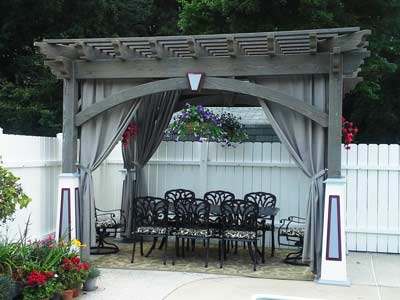
Bamboo Gazebo: Not as commonly used is bamboo. Bamboo is lightweight, environmentally sustainable and has its own unique look and beauty. The Tonkin cane variety of bamboo is has been compared to fiberglass in strength. That is amazing considering it is a piece of grass.
The weakness of bamboo is in its inconsistency and many variables. Architectural engineers note that bamboo shrinks, cracks and will begin to deteriorate with moisture. Bamboo does not do well against unnatural horizontal force. Bamboo even when filled with concrete as a structural strategy to strengthen the bamboo where the compression load exists, is still a safety concern. In places like Florida that experience extremely strong winds building regulations require that an outdoor structure be designed to be able to withstand up to 160 mph winds. A bamboo structure is too fragile to meet these types of requirements; a well engineered timber frame gazebo can.
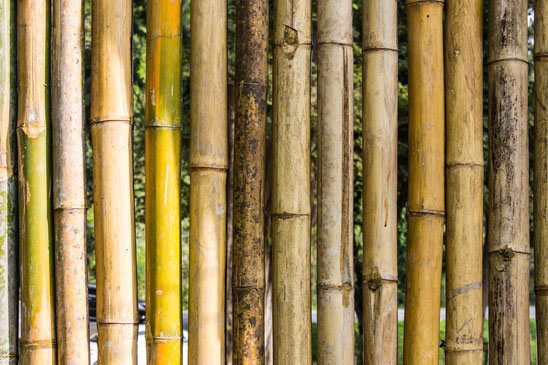
Metal Gazebo: Metal is a durable construction material. There are typically two metals used for gazebos which is steel or aluminum, each having its own advantages and disadvantages.
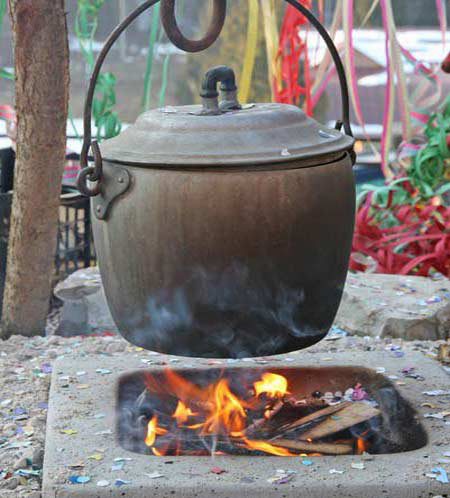
Aluminum Gazebo: When aluminum was first identified a century ago it was rare and expensive. It was said that in 1855 the cost to produce aluminum made aluminum more precious than gold, platinum or silver. Aluminum has since been recognized as the most abundant metal on the earth, about 1/3 of the most bountiful element known to man, covering approximately 8% of the earth's crust. Only oxygen and sand exist in a greater abundance. Aluminum is very lightweight, easily shaped, can be melted with a simple blow torch, readily bends; which makes it a much easier metal to install over a steel structure. It is higher in resistance to corrosion over many other metals due to its tenacious film of oxide and aluminum is also initially more affordable. Aluminum can be painted any color to match and tie into surrounding buildings and accessories. Aluminum has a lot to offer the world but is a poor choice of material in gazebo construction.
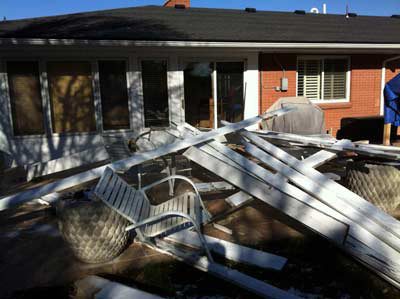
Aluminum holds in dirt, easily melts, bends and is too lightweight for a durable gazebo, which is why aluminum structures such as the aluminum pergola pictured to the left are often blown down in a gust of strong wind. Another major drawback for an aluminum gazebo is aluminum's amazing ability to retain heat and cool down quickly which is why it is used in cookware. Even with cookware though, aluminum is not always perfect. Uncoated aluminum cookware give warnings and instructional precautions that uncoated aluminum can easily melt. Aluminum is a poor choice for any kind of bodily comfort and protection from the elements.
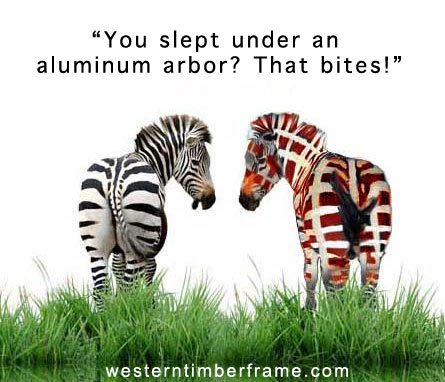
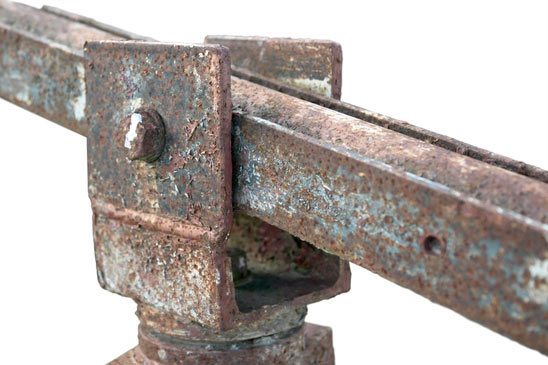
Steel Gazebo: Steel is strong and used largely in architectural construction. If a gazebo is very large, a crane and sufficient space may be needed, to help in the assemblage. Steel is very expensive but if the pocket book can carry the expense steel can last many years and can be repainted again and again. However, for comfort, steel cannot come close to a well-designed timber frame structure. Steel does not heat up and cool down quite as fast or as even as aluminum but it is used in cookware manufacturing for its ability to transfer heat well.
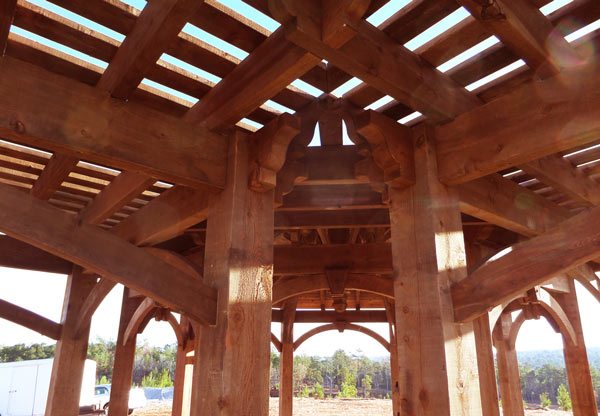
Vinyl or Thermoplastic Gazebo: Gazebos are often built out of synthetic thermoplastics like vinyl. These plastics are can be painted to look like stone, wood or brick. They are extremely lightweight, can be installed easily and are sold as "maintenance free". However, numerous fail-safe "maintenance free" products once sold as invincible have by experience proved otherwise. This is why major hardware retailers like Home Depot and online resellers like Amazon now carry vinyl and plastic restoration kits.
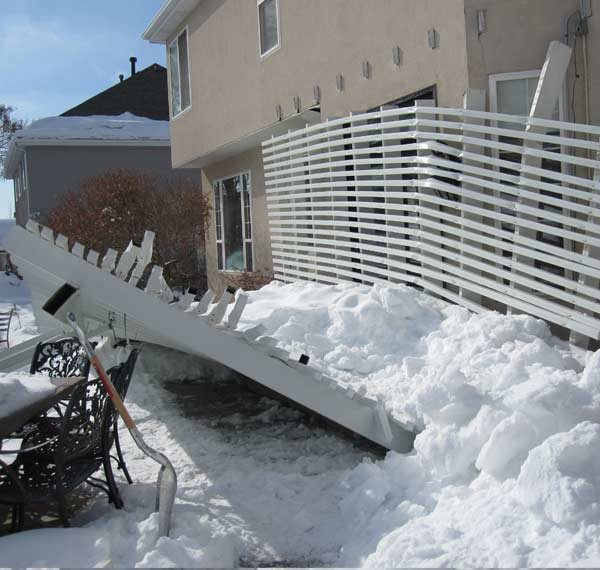
Gazebos constructed from vinyl or thermoplastics cannot withstand even common everyday weather for an enduring gazebo. Vinyl siding has had issues of distorting and melting due to reflective heat from simple sources such as the neighbor’s windows. Numerous complaints about melting of vinyl siding has forced builders to boost homeowners confidence by installing low-E windows to help reduce sun reflection. Unfortunately for vinyl (PVC), reflection from windows are not the only problem; the sun still shines. Vinyl's initial low cost may be attractive to some, for others, vinyl’s flimsiness and cheap aesthetic look spoils the appearance of a home, procuring a cost beyond its value.
As A Side Note: In the past there have been continuous safety issues and questions concerning as to whether or not Vinyl Is Killing You as well as to its destructive impact upon our environment. The environmental and health dangers of Polyvinyl are no longer debated. Chloride monomer and ethylene dichloride (43% crude oil), the main components of Vinyl (PVC), are listed on the EPA's Toxic Release Index. The C in PVC stands for Chlorine which takes a a great amount of energy to create from salt and its toxic waste contains dioxin and sometimes mercury, created in the processing. It is the presence of chlorine that creates the most hazardous byproducts in its manufacturing and disposal. The other 43% of PVC is made from crude oil, a non-renewable resource.
Timber Frame Gazebo: Timber framing is still one of the main choices of architectural engineers for seismic load carrying strength to remain steadfast under continual exposure to seasonal freezing, powerful winds and adverse de-icing agents. For more information about the strength of durability of timber frame see Timber Frame, Against the Wind, Under Snow and Seismic Loads. Weight and strength are two important factors in the durability of outdoor structures such as gazebos, arbors, pergolas and pavilions. Timber is also easy to and fast to install.
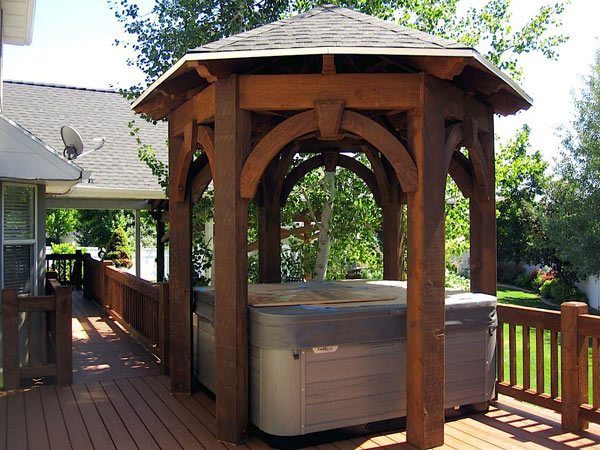
The natural elasticity of timber will compensate for structural movement and is more conducive to responsible architectural design than inelastic. Invariably, the earth experiences seismic vibrations from natural and sometimes artificial causes, moving up and down as well as side-to-side. Architectural structures will carry their own weight vertically by resisting the up and down loads (or it would fall down) but the greatest weakness in a building is in its lateral movement, side to side. Structures with added cladding like in metals will experience stronger forces. Kinematic mechanisms have to be installed in inelastic architectural materials to compensate for structural movement that occurs from the seismic ground movement.
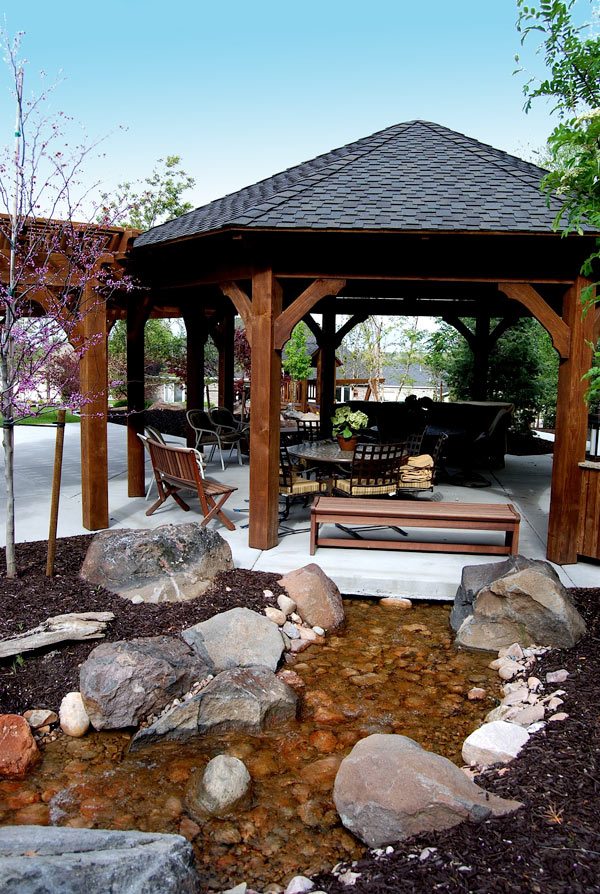

Timber is stable having inherent air pockets so it is less prone to condensation and temperature extremes that affect aluminum, metal or vinyl. Western Timber Frame™ uses an added benefit for gazebo construction with the proven dovetail notch system that works well with the stature and design of wood compensating for seismic movement remaining consistent with changes in weather and humidity. Using modern technologies, building timber frame structures is eco-friendly, cost efficient and can be preserved for centuries to come.
Timber is more stimulating and rejuvenating to our senses with its warmth, smell and variations in color. Timber frame wood is the world’s best insulator and can carry two different temperatures at the same time on either side. Bacteria will not reproduce itself on wood and wood is earth friendly as well as human friendly.
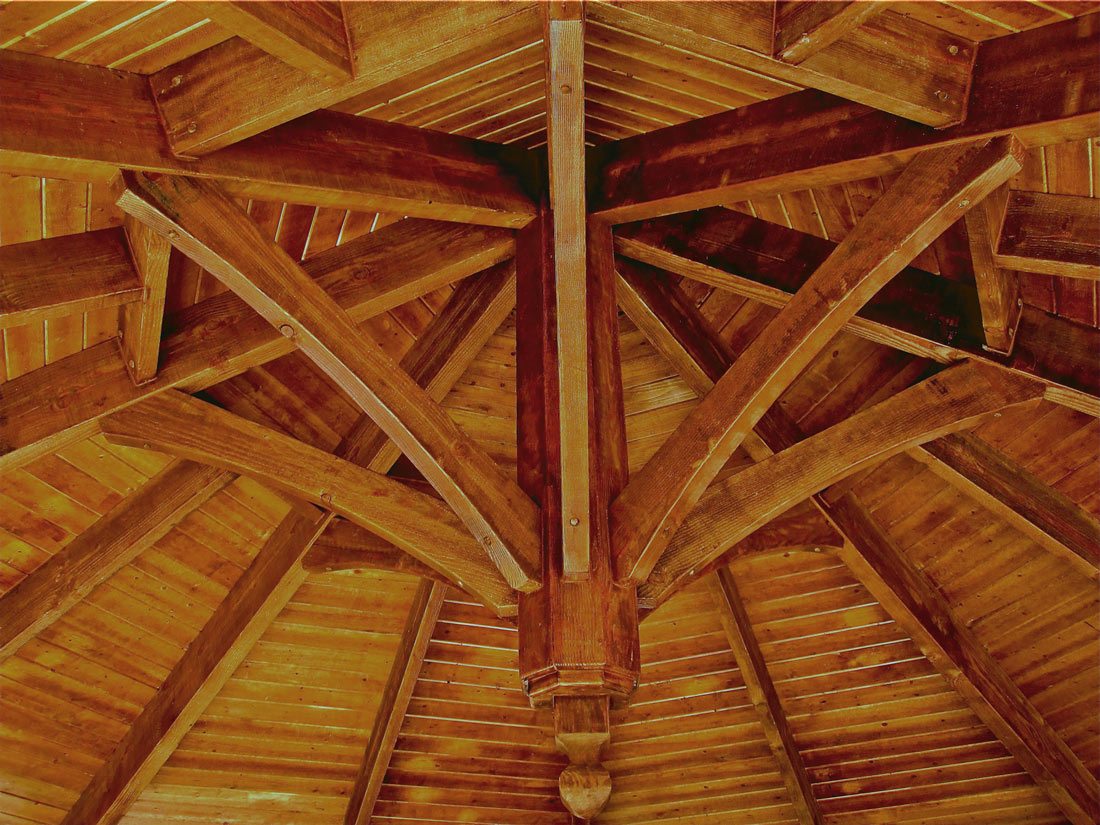
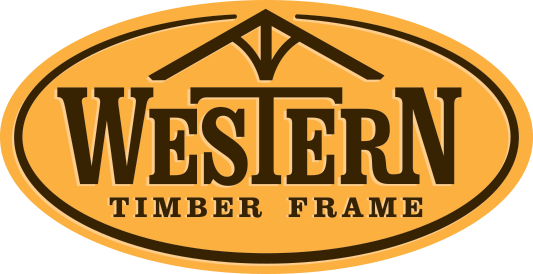
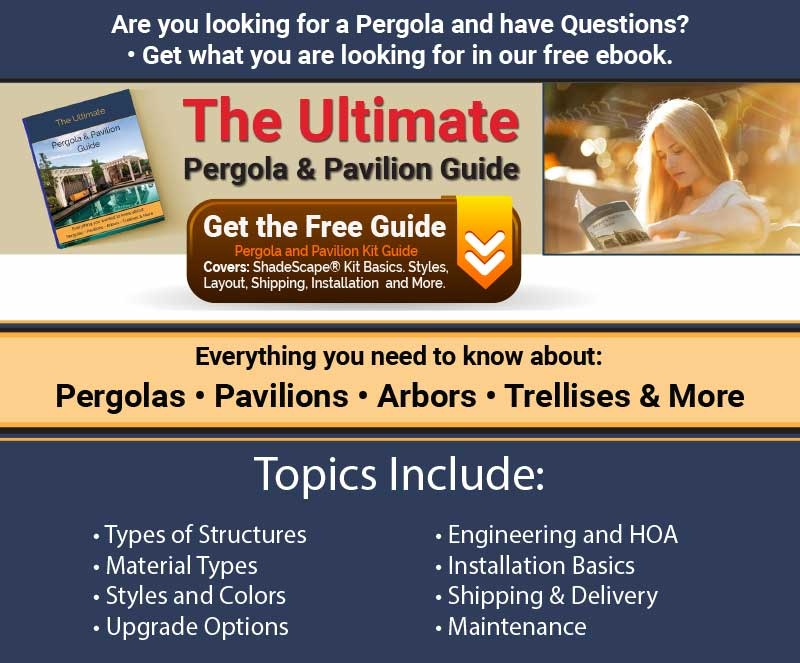
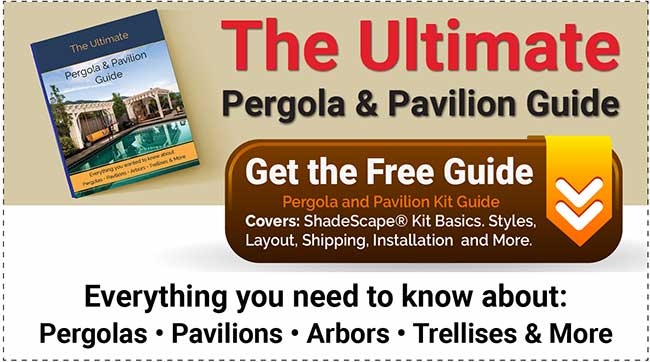
3 Comments
thank you
Leave a Comment